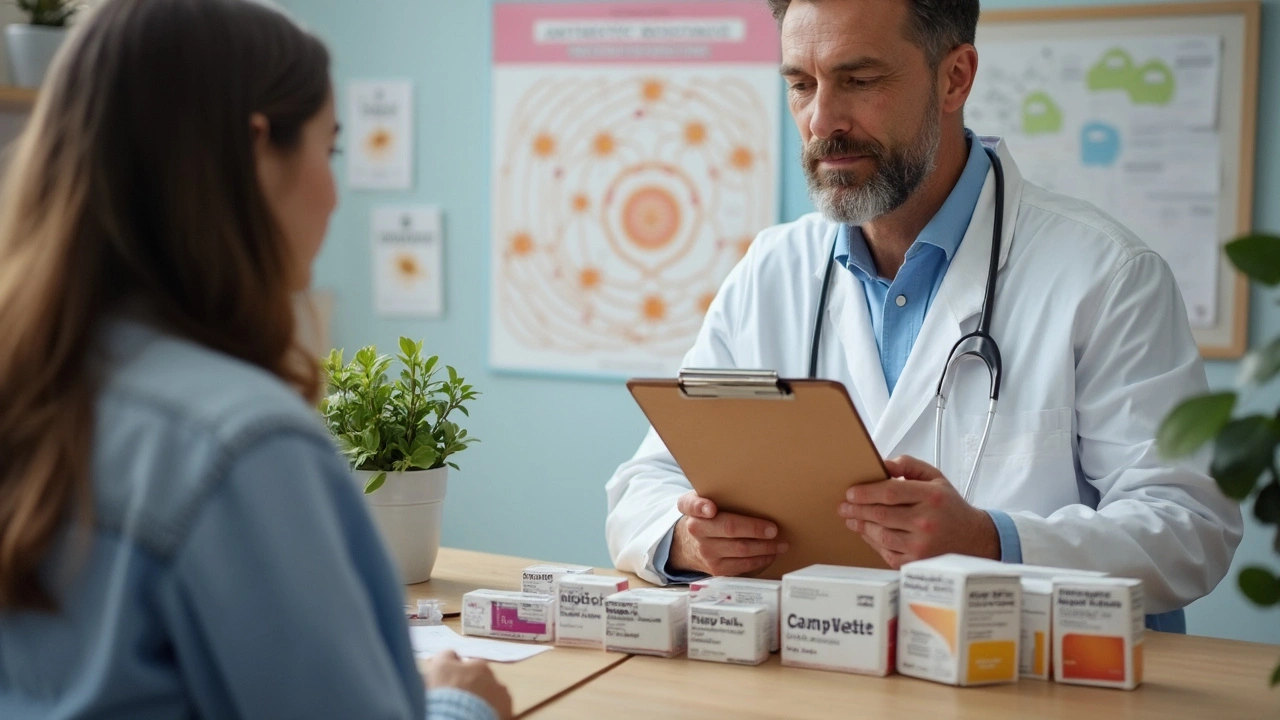Non‑Prescription Antibiotics: Quick Guide
If you’ve ever grabbed a tube of ointment for a cut or bought a spray for a scraped knee, you’ve already used a non‑prescription antibiotic. These products are sold without a doctor’s note and are meant for minor skin problems, not serious infections. Knowing what they can do, when they’re helpful, and where they fall short can save you a trip to the pharmacy and keep you from making things worse.
Common Over‑The‑Counter Antibiotic Products
Most OTC antibiotics are topical – they sit on the skin and stop bacteria from growing. The big names you’ll see on shelves are:
- Bacitracin – a thin cream that’s good for small cuts, scrapes and burns.
- Mupirocin (Bactroban) – a prescription‑only drug in many places, but some low‑strength versions are sold over the counter in a few countries. It works well for impetigo.
- Polysporin – a blend of bacitracin and polymyxin B, offering a broader coverage for minor wounds.
- Neosporin – similar to Polysporin but adds a pain‑relieving ingredient.
- Hydrogen peroxide – not an antibiotic, but often bundled with them for cleaning before you apply the ointment.
There are a few oral products you might see labeled “antibacterial,” like lozenges for sore throats or nasal sprays with silver ions. They’re not true antibiotics and work mainly by soothing the area.
Safety Tips and When to See a Doctor
Using an OTC antibiotic is easy, but you still need to be careful. Apply a thin layer after cleaning the wound with mild soap and water – more isn’t better. Cover the area with a clean bandage if it’s likely to get dirty, then change the dressing daily.
If the wound shows any of these signs, stop the ointment and call a healthcare professional:
- Increasing redness, swelling or warmth beyond the immediate area.
- Fever or feeling generally ill.
- Pus that’s thick, foul‑smelling, or spreading.
- Red streaks that move away from the wound.
These symptoms suggest a deeper infection that needs a prescription‑strength antibiotic.
Another big concern is antibiotic resistance. Even though OTC products contain low doses, overusing them can teach bacteria to survive. That’s why you should only use an OTC antibiotic for the specific purpose on the label and stop once the wound looks clean – usually after 5‑7 days.
Store ointments in a cool, dry place and keep the cap tight. Most products stay effective for a year, but if the texture changes or it smells odd, toss it out.
Finally, remember that antibiotics don’t work on viruses. A cold sore, a simple cold, or a flu won’t get better with any OTC antibiotic. If you’re unsure, the safest bet is to check with a pharmacist or your doctor.
Bottom line: non‑prescription antibiotics are handy for small skin injuries, but they’re not a cure‑all. Use them correctly, watch for warning signs, and don’t hesitate to seek professional help when the healing road gets bumpy. This approach keeps you safe, speeds up recovery, and helps protect the effectiveness of antibiotics for everyone.
Medicines Like Amoxicillin: Prescription and OTC Alternatives (Doctor’s List)
If you’ve ever been told you need amoxicillin and wondered if there’s something else you can take, you’re not alone. This article dives deep into prescription and over-the-counter medicines that work similarly to amoxicillin, breaking down which conditions each option covers. You’ll find a doctor-inspired list of alternatives you can discuss with your healthcare provider, plus interesting facts about how these antibiotics compare, how resistance works, and tips for safe use. Find out what really sets these medicines apart—with practical info you can use.
Learn more...